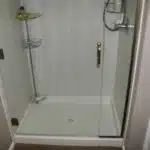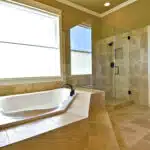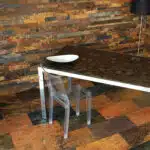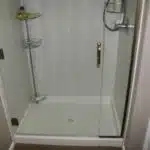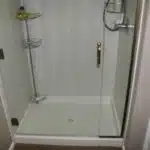When it comes to bathroom renovations or new construction, the choice between a prefabricated stall and a tiled shower can be a difficult decision. Both options have their benefits and drawbacks, and weighing these factors is crucial to making an informed decision that suits the specific needs of the project.
Prefabricated stalls offer convenience and affordability, while tiled showers provide flexibility in design and durability. Understanding the differences between these two options can help homeowners and contractors make an informed decision that meets their particular requirements. In this product guide, we will explore the advantages and disadvantages of both prefabricated stalls and tiled showers, as well as provide information on materials, installation methods, maintenance, and cost. Whether you are remodeling your bathroom or constructing a new one from scratch, this guide will serve as a valuable resource for those seeking to make an informed decision about which option is best suited for their needs.
Introduction To Prefabricated Stalls And Tiled Showers
When it comes to bathroom design, one of the most important decisions homeowners face is choosing between prefabricated stalls and tiled showers. Both options have their pros and cons, so it’s essential to consider various factors before making a final decision. Let’s explore each option in more detail.
Prefabricated stalls offer many benefits, including easy installation and maintenance. These pre-made shower units come in a range of styles and sizes, making them suitable for any bathroom design. Additionally, they are cost-effective compared to custom tile work, which can be a significant advantage for those on a tight budget. However, some cons to consider are that these stalls may limit creativity in design and may not last as long as tiled showers.
On the other hand, tiled showers provide ultimate flexibility when it comes to customization. They allow homeowners to create unique designs that fit their personal style and preferences. Moreover, they typically last longer than prefabricated stalls due to their durable materials such as ceramic or porcelain tiles. However, the downside is that they require professional installation and regular maintenance to keep them looking their best.
Design trends are constantly evolving in the world of bathroom remodeling. As such, both prefabricated stalls and tiled showers offer various design options that cater to different tastes and preferences. Homeowners who want an easy installation process with low maintenance costs can opt for prefabricated stalls while those who prioritize customization can choose tiled showers. In the next section, we will compare the cost differences between these two options in more detail without further ado.
Cost Comparison: Prefabricated Stalls Vs. Tiled Showers
Introduction to Prefabricated Stalls and Tiled Showers:
In the world of bathroom remodeling, prefabricated stalls and tiled showers are two popular options that offer different benefits. Prefabricated stalls come in a pre-made unit that can be easily installed, while tiled showers require more time and effort to create a customized design. In this guide, we will explore the differences between these two options to help you make an informed decision for your bathroom renovation.
Cost Comparison: Prefabricated Stalls vs. Tiled Showers:
When it comes to installation time and aesthetic appeal, prefabricated stalls are often the better choice. These units can be installed quickly and easily by a professional or even a DIY homeowner with some basic plumbing experience. Additionally, prefabricated stalls come in a variety of styles and finishes that can match any bathroom decor. They also have a sleek and modern look that can enhance the overall aesthetic appeal of your bathroom.
On the other hand, tiled showers require a significant amount of time and effort to create a custom design. Installation methods involve laying individual tiles by hand, which can take several days or even weeks depending on the size of the shower area. While tiled showers offer more customization options than prefabricated stalls, they may not be worth the extra time and cost if you are looking for a quick remodel.
Installation Methods for Prefabricated Stalls:
Now that we’ve explored the differences between prefabricated stalls and tiled showers, let’s take a closer look at installation methods for prefabricated stalls. There are different types of prefabricated stalls available on the market today. Some come as one-piece units that require minimal assembly while others need to be assembled on-site using several pieces.
One popular method is installing one-piece fiberglass shower enclosures which can be placed directly over existing plumbing fixtures without requiring additional plumbing work or tile installation. Another option is multi-piece acrylic shower enclosures which are easy to install and can be customized to fit any bathroom size. Choosing the right installation method will depend on your budget, bathroom size, and personal preferences.
Installation Methods For Prefabricated Stalls
Installation Techniques for Prefabricated Stalls: Pros and Cons
Installing a prefabricated shower stall is a convenient and cost-effective option for homeowners who want to renovate their bathroom without the hassle of tile installation. The process involves connecting the pre-made walls, base, and fixtures to the existing plumbing system. One of the advantages of prefabricated stalls is that they come with comprehensive instructions that help homeowners easily install them by themselves. However, if you are not confident in your plumbing skills or have never installed a shower before, it is recommended to hire a professional.
Before starting the installation process, ensure that you have all the necessary tools and equipment. Some of these include a level, drill, screwdriver, caulking gun, silicone sealant, and plumber’s putty. It is also essential to consider the location of your stall as it may affect the type of plumbing connections required. For instance, if your stall is located on an upper floor, you may need additional support to prevent water damage.
While prefabricated stalls offer numerous benefits such as easy installation and low maintenance costs, they also have some drawbacks. One disadvantage is limited customization options as you cannot modify their design once installed. Additionally, they are generally less durable than tiled showers and may require frequent repairs or replacement over time. Overall installing a prefabricated shower stall can be an excellent choice for those looking for convenience and affordability while keeping in mind its limitations.
Transition sentence: Now that we have discussed the installation techniques for prefabricated stalls let’s explore how installing a tiled shower differs from this method.
Installation Methods For Tiled Showers
After exploring the installation methods for prefabricated stalls, it’s time to delve into the world of tiled showers. If you’re looking for a luxurious and elegant shower experience, then a tiled shower might be just what you need. Unlike prefabricated stalls, tiled showers offer endless design possibilities that can add value to your home. However, with great design comes great responsibility – and in this case, it’s waterproofing.
One of the crucial elements of a tiled shower is the shower pan. A good-quality shower pan is essential for effective water drainage and preventing leaks. There are various types of shower pans available in the market such as fiberglass, acrylic, and tileable ones. The type you choose will depend on your budget and preferences.
Once you have selected your shower pan and decided on its location, it’s time to focus on waterproofing techniques. You must ensure that all walls surrounding the tiled area are waterproofed properly to prevent moisture damage. Some popular techniques include using a liquid membrane or waterproofing sheet membranes. By adopting appropriate waterproofing techniques, you’ll have peace of mind knowing that your beautiful tiles won’t be compromised by moisture damage.
Material Options for Tiled Showers
If you’re planning to install a tiled shower in your home, then you’ll want to know about the various material options available in the market:
- Ceramic: Durable and easy-to-clean glazed ceramic tiles come in countless colors and designs.
- Glass: Glass tiles give an ethereal look but require more maintenance than other materials.
- Stone: Natural stone tiles like marble or granite provide an upscale feel but may require sealing.
- Porcelain: Porcelain offers strength, durability, and low maintenance requirements.
- Mosaic: Mosaic tiles come in small pieces that can be arranged into intricate patterns for a unique look.
When it comes to tile installation and grouting methods for these materials mentioned above, there are different options available. In the end, it’s about selecting the right combination of materials and installation techniques that fit your budget, style, and lifestyle.
Material Options For Prefabricated Stalls
When it comes to choosing a prefabricated stall, one of the most important factors to consider is the material it’s made from. Two popular options are fiberglass and acrylic. Fiberglass stalls are known for their affordability and durability. They’re also lightweight, which makes them easy to install. However, they can be prone to scratching and cracking if not properly maintained.
Acrylic stalls, on the other hand, are more expensive than fiberglass but offer a wider range of benefits. They’re highly resistant to scratches and cracks, making them ideal for high-traffic areas like bathrooms. Additionally, acrylic is a non-porous material that resists mold and mildew growth. While they may require professional installation due to their heavier weight, many homeowners find that the long-term benefits of an acrylic stall outweigh any initial costs.
Another factor to consider when selecting a prefabricated stall is whether you want a textured or smooth surface. Textured surfaces provide better grip in wet environments, reducing the risk of slips and falls. Smooth surfaces are easier to clean but can be slippery when wet. Ultimately, the decision between textured and smooth will come down to personal preference and specific needs.
| Material | Pros | Cons |
|---|---|---|
| Fiberglass | Affordable; Lightweight; Durable | Prone to scratches and cracks |
| Acrylic | Highly resistant; Non-porous; Resists mold/mildew growth | More expensive; May require professional installation |
Overall, there are several material options available for prefabricated stalls that cater to different needs and budgets. When making your selection, consider factors such as durability, maintenance requirements, and slip resistance. In the next section, we’ll explore material options for tiled showers that offer even more customization possibilities for your bathroom renovation project.
Material Options For Tiled Showers
Shower tile options are plentiful, providing homeowners with a range of design possibilities. From classic subway tiles to natural stone mosaics, there is a tile option for every taste and preference. One of the most popular design trends in tiled showers is creating an accent wall or patterned design using smaller tiles in complementary colors or textures.
When considering shower tile options, it’s important to keep durability in mind. Porcelain and ceramic tiles are both durable choices that can withstand frequent use and exposure to water. Natural stone tiles, such as marble or slate, offer a unique and luxurious look but require more maintenance to prevent staining or damage.
Tile design trends are constantly evolving, so it’s essential to stay up-to-date when selecting materials for your shower. Some current trends include using large-format tiles for a sleek, modern look and incorporating metallic or glass accents for added visual interest. It’s also becoming increasingly popular to mix different types of tile within the same space, such as using subway tiles on the walls and hexagonal mosaic tiles on the floor.
Moving onto the durability of prefabricated stalls, it’s important to note that while they may not offer the same level of customization as tiled showers, they do have some advantages in terms of longevity and ease of maintenance. In the next section, we’ll explore some key factors to consider when choosing between a prefabricated stall and a tiled shower for your bathroom renovation project.
Durability Of Prefabricated Stalls
When it comes to tiled showers, the material options available are endless. From classic ceramic and porcelain to trendy glass and stone, each type of tile offers a unique look and feel. Not only do these materials have aesthetic appeal, but they are also durable and long-lasting if properly installed and maintained.
The installation process for tiled showers can be quite extensive, as it involves laying each individual tile in place with precision. However, this meticulous process ensures that the shower will not only look beautiful but also function properly. It is recommended to hire a professional installer to ensure the job is done correctly.
To keep a tiled shower looking its best, regular maintenance is essential. Grout lines should be sealed annually to prevent water damage and mold growth. Tiles should be cleaned regularly with non-abrasive cleaners to avoid damage to the surface. Additionally, any cracks or chips in tiles or grout should be repaired promptly to prevent further damage.
Here are three tips for maintaining a tiled shower:
- Use non-abrasive cleaners specifically designed for tile surfaces.
- Seal grout lines annually to prevent water damage and mold growth.
- Repair any cracks or chips in tiles or grout promptly.
In summary, while the installation process for tiled showers may be more involved than prefabricated stalls, their durability and timeless appearance make them an attractive option for many homeowners. With proper maintenance techniques like sealing grout lines annually and repairing any damages quickly, tiled showers can provide years of use without showing signs of wear or tear. In the next section, we will discuss the durability of prefabricated stalls compared to tiled showers.
Durability Of Tiled Showers
The durability of tiled showers has been a topic of discussion among homeowners and contractors. Some people believe that tiled showers are not as durable as prefabricated stalls, while others argue that the opposite is true. To investigate the truth of these claims, it is necessary to consider various factors that affect the longevity of both types of shower products.
One important factor to consider when evaluating the durability of tiled showers is tile maintenance. Proper maintenance can significantly extend the lifespan of a tiled shower. Regular cleaning, sealing, and re-grouting can help prevent water damage and mold growth, which can weaken the grout and cause tiles to become loose over time. On the other hand, neglecting tile maintenance can lead to costly repairs or even replacement in extreme cases.
Another factor that affects the longevity of prefabricated stalls is their construction materials. Prefabricated stalls are typically made from acrylic or fiberglass materials, which may not be as durable as tiles in terms of resisting scratches and cracks. Moreover, these materials may deteriorate over time due to exposure to harsh chemicals or extreme temperatures. While some manufacturers offer warranties for their prefabricated stalls, it is important to understand that such warranties do not cover normal wear and tear or improper use.
Considering these factors, it is fair to say that both prefabricated stalls and tiled showers have their respective advantages and disadvantages when it comes to durability. However, with proper maintenance and care, a properly installed tiled shower can last decades without needing major repairs or replacement. In the subsequent section, we will discuss customization options for tiled showers that allow homeowners to personalize their shower design while ensuring maximum durability and functionality.
Customization Options For Tiled Showers
When it comes to tiled showers, the customization options are endless. Custom tile designs can be created to match any style preference or design aesthetic. From bold and graphic patterns to simple and elegant designs, there is a tile option for every taste. Additionally, tiles come in a variety of shapes and sizes, allowing for even more design possibilities.
Tile color options also provide an opportunity for personalization in a tiled shower. Whether you prefer a monochromatic look or want to incorporate pops of color into your design, there are countless tile shades to choose from. Neutral tones like beige, gray, and white are classic choices that never go out of style. For those who want something bolder, bright hues like blue or green can add a fun and playful element to the space.
Overall, the customization options available with tiled showers make them an attractive choice for those looking to create a unique and personalized bathroom experience. With custom tile designs and color options available, homeowners have the ability to create a truly one-of-a-kind space that reflects their personal style preferences. In the next section, we will discuss maintenance requirements for prefabricated stalls as well as tips on how to keep them looking great for years to come.
Maintenance Requirements For Prefabricated Stalls
Like a well-oiled machine, prefabricated stalls require consistent attention to function at their best. Regular cleaning is necessary to prevent the buildup of soap scum and mildew. For daily cleaning, simply wipe down the walls and floor with a non-abrasive cleaner and rinse thoroughly with water. For deeper cleaning, use a mixture of vinegar and water or a specialized bathroom cleaner designed for prefabricated stalls. Avoid using abrasive materials such as steel wool or scouring pads as they may damage the surface.
When it comes to repairs, prefabricated stalls offer several options depending on the extent of damage. Minor scratches, chips, or cracks can often be repaired with a patch kit available at most hardware stores. For more significant damage, replacement panels may be necessary which can be easily switched out without disrupting the surrounding area. It is important to address any damage promptly to avoid further deterioration of the stall.
Overall, maintenance for prefabricated stalls is relatively straightforward with regular cleaning and prompt repairs being key components in keeping them functioning optimally. By following these simple guidelines, you can ensure that your stall will provide years of trouble-free service without sacrificing style or convenience.
As important as it is to maintain prefabricated stalls properly, tiled showers have their own set of unique challenges when it comes to upkeep. From different cleaning methods to repair options, understanding how to properly care for your tiled shower will ensure its longevity and beauty for years to come.
Maintenance Requirements For Tiled Showers
Tiled showers have a reputation for being luxurious and stylish. They are also quite durable, but they require regular maintenance to keep them looking their best. One of the most important maintenance tasks is sealing the grout. Grout is porous and can absorb water, which can cause mold and mildew to grow. By regularly sealing the grout, you can prevent this from happening.
In addition to sealing the grout, there are other cleaning tips that can help keep your tiled shower looking great. For example, it’s important to use a non-abrasive cleaner that won’t scratch the tiles or damage the grout. You should also avoid using harsh chemicals that could discolor or damage the tiles. Instead, use a mild detergent and warm water to clean your shower.
Finally, it’s important to be consistent with your cleaning routine. Make sure you clean your tiled shower regularly so that dirt and soap scum don’t build up over time. By following these simple maintenance requirements, you can keep your tiled shower looking great for years to come.
- Use a squeegee after every shower to remove excess water from the tiles.
- Avoid using abrasive scrubbers or brushes on the tiles or grout.
- Consider using a daily shower cleaner spray to prevent soap scum buildup.
Regular maintenance is key to keeping your tiled shower in top condition. By sealing the grout, using non-abrasive cleaners, and developing a consistent cleaning routine, you can enjoy your beautiful tiled shower for many years.
Now that we’ve covered some basic maintenance requirements for tiled showers let’s take a closer look at another important aspect of bathroom design: water resistance of prefabricated stalls.
Water Resistance Of Prefabricated Stalls
Water damage is a major concern for any homeowner, and it’s important to choose the right shower product to ensure your bathroom stays dry and free of mold. Prefabricated stalls offer a convenient solution for those looking for a quick and easy installation process, but they may not always provide the best waterproofing methods. Common issues with prefabricated stalls include leaky seams or corners, as well as gaps between the stall and surrounding walls.
To combat these issues, many prefabricated stalls are designed with built-in waterproofing features such as vinyl or acrylic coatings. However, these coatings may eventually wear down over time and require reapplication. Additionally, some prefabricated stalls may have weaker materials or construction that can lead to cracks or holes, further compromising their water resistance.
It’s important to carefully consider the waterproofing methods used in any prefabricated stall before making a purchase. Look for products that have been tested and certified by third-party organizations to ensure their quality and durability. Regular maintenance and inspection can also help prevent common issues from developing into larger problems.
Moving forward, those who prefer tiled showers over prefabricated stalls should know that there are different types of tiles available on the market today. It’s important to choose tiles that are specifically designed for use in wet areas such as showers. In our subsequent section about water resistance of tiled showers, we will explore some of the common tile options available today and how they compare in terms of water resistance.
Water Resistance Of Tiled Showers
As with prefabricated stalls, water resistance is a significant factor to consider when selecting a tiled shower. Tiled showers are known for their durability and ability to withstand water damage as long as they are installed correctly. The tile itself is also water-resistant, which means that it can prevent water penetration while still providing an attractive finish.
When it comes to choosing the right shower head options for your tiled shower, there are several things to keep in mind. Firstly, consider the type of spray you want, whether it be rain, massage or mist. Secondly, think about the height and angle of the showerhead since this will affect how much water hits the tile floor. Finally, make sure that the showerhead is made from high-quality materials that can resist corrosion and wear over time.
Maintaining a clean tiled shower requires some effort but is essential for maintaining its appearance and hygiene over time. One tip for keeping your tiles looking their best is to use non-abrasive cleaners and avoid scrubbing too hard. Additionally, regular cleaning with a mild detergent can help remove any soap scum or mildew buildup that may occur over time.
Overall, tiled showers offer excellent design flexibility since they come in a variety of styles and colors that can complement any bathroom decor. Whether you prefer classic white subway tiles or trendy geometric patterns, there’s no limit to what you can achieve with a tiled shower. With proper installation and maintenance, your tiled shower will provide years of beauty and functionality in your home.
Design Flexibility Of Tiled Showers
Tile patterns can be used to create a unique aesthetic, with a variety of colors, shapes, sizes, and textures available. Grout color should be chosen carefully to create visual interest and contrast. Different shower layouts offer a variety of options for drain placement, floor installation, wall height, and recessed shelving. Wall niches, wallpaper accents, design accessories, corner seating, waterproofing, drain type, fixtures, and shower doors can all be used to customize the look and feel of a tiled shower.
Tile Patterns
Design flexibility is one of the key benefits of installing a tiled shower. The ability to choose from a wide range of tile patterns allows you to create a unique and personalized look that suits your taste and style. Geometric tiles are an excellent option for those who prefer clean lines and sharp angles. These tiles come in various shapes, including triangles, hexagons, and diamonds, allowing you to create dynamic patterns that add depth and interest to your shower.
If you prefer a more intricate design, mosaic patterns may be the ideal choice for you. These small tiles can be arranged in elaborate designs or simple repeating patterns to create a stunning visual effect. Mosaic tiles are available in various materials like glass, ceramic, and stone, offering endless possibilities for customization. Whether you opt for a monochromatic color scheme or want to mix and match different hues, the flexibility of mosaic patterns ensures that your shower will be truly one-of-a-kind.
In conclusion, tiled showers provide an abundance of design options not possible with prefabricated stalls. By incorporating geometric tiles or mosaic patterns into your shower’s design aesthetic, you can achieve the perfect balance between functionality and style. Remember also that these tile options are highly durable and easy to maintain with proper care, making them an investment that will last for years to come.
Grout Color
Design flexibility is a significant benefit of using tiled showers over prefabricated stalls. Apart from the wide range of tile patterns to choose from, you can also select the grout color that will enhance your shower’s design aesthetic. Choosing the right grout color is crucial because it can make or break the overall look of your shower. It’s essential to consider how the grout color will complement or contrast with your chosen tiles.
When selecting a grout color, it’s best to match the color to the tile as closely as possible for a seamless look. However, contrasting colors can create a striking effect that draws attention to your tiles’ pattern and texture. Keep in mind that light-colored grouts tend to show dirt and stains more quickly than darker ones, so if you prefer lighter hues, be prepared for higher maintenance requirements. Regular cleaning and sealing can keep your grout looking clean and fresh for years to come.
Grout maintenance tips include wiping down surfaces after each use and avoiding abrasive cleaners that can damage the surface. Regularly deep cleaning with a pH-neutral cleaner and sealing every six months or so will help prevent staining and discoloration. Proper care of your shower’s grout ensures that it continues to complement and enhance your tiles’ design aesthetic while maintaining its durability over time.
Making The Best Choice For Your Bathroom Project
Are you renovating your bathroom and don’t know whether to choose a prefabricated stall or a tiled shower? Both options have their pros and cons, so it’s important to weigh them carefully before making a decision. In this section, we’ll explore the benefits and drawbacks of each choice, as well as some installation tips that can help you achieve the best results for your project.
Let’s start with prefabricated shower stalls. One of the main advantages is that they are easy to install, even for DIY enthusiasts with limited experience. They come in pre-measured pieces that fit together seamlessly, saving time and labor costs. Additionally, they are typically made of durable materials such as fiberglass or acrylic which are low-maintenance and resistant to stains and scratches. On the downside, prefabricated stalls offer less design flexibility than tiled showers and may not fit all bathroom layouts.
On the other hand, if you opt for a tiled shower, you’ll have more creative freedom to customize your space according to your preferences or existing decor. Tiled showers also tend to be more luxurious-looking than prefabricated ones due to their high-end materials such as ceramic or stone tiles. Moreover, they can increase the value of your home if done correctly. However, tile installation is more complex than installing a prefab unit and requires skilled labor and higher costs. Maintenance-wise, tiles need regular cleaning and sealing to prevent mold growth or water damage.
Regardless of which option you choose, it’s essential to follow proper installation tips for optimal results. For example, ensure that the plumbing is properly installed before placing any units or tiles; use waterproofing materials on walls and floors; hire certified professionals if necessary; measure accurately; allow adequate ventilation; etc.
In summary, both prefabricated shower stalls and tiled showers have their own advantages and disadvantages depending on factors such as budget, aesthetic preferences, ease of maintenance/installation among others.. Ultimately it boils down to the individual needs of each homeowner. Take note of the points mentioned above, and make an informed decision that meets your expectations and budget.
Conclusion
When it comes to renovating your bathroom, choosing between a prefabricated stall or a tiled shower can be a daunting task. Both options have their pros and cons, and it ultimately comes down to personal preference and budget.
In terms of cost, prefabricated stalls are typically cheaper than tiled showers due to lower labor costs and the use of pre-made materials. However, tiled showers offer more design flexibility and can add value to your home. Installation methods also differ between the two options, with prefabricated stalls being easier and quicker to install but limited in customization.
Material options for prefabricated stalls include acrylic, fiberglass, and PVC, while tiles for showers come in a variety of materials such as ceramic, porcelain, and natural stone. Both options offer water resistance, but tiled showers require proper sealing during installation to prevent water damage over time.
Ultimately, the decision between a prefabricated stall or tiled shower depends on your individual preferences and budget constraints. Consider factors such as cost, installation time, material options, water resistance, and design flexibility before making your final decision.
In conclusion, whether you choose a prefabricated stall or a tiled shower for your bathroom renovation project will depend on various factors such as budget constraints and individual preferences. While prefabricated stalls have their benefits in terms of cost-effectiveness and easy installation methods; tiled showers offer more design flexibility with various materials available for selection. In the end, it is essential to weigh all these factors before making an informed decision that works best for you!
Image Credits
- “Shower + floor tiles.” by dalazzarato (featured)
















